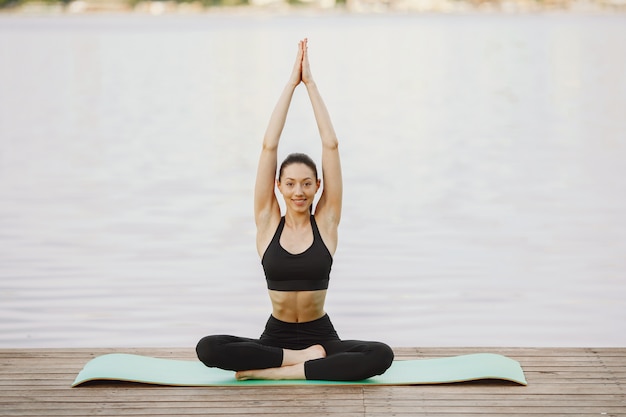
A yoga body isn’t just about being flexible. It turns out, yoga can also boost memory, heart health, and bone strength, according to Anna Magee.
People in the UK are currently spending around £790 million a year on yoga classes and mats. Yoga is evolving with quirky new styles like yoga with dogs, on paddleboards, and even while naked. Despite these odd trends, scientific studies are proving the real health benefits of yoga. For instance, researchers at UCLA discovered that a three-month yoga and meditation course was more effective than traditional memory activities for reducing age-related brain changes. Another study found it helped breast cancer survivors sleep better.
Lucy Edge, a 53-year-old former advertising executive, turned to yoga during a period of deep depression instead of taking prescribed anti-depressants. After spending six months in India learning yoga, she returned feeling happier and more content. This inspired her to write three books on yoga and create Yoga Meds, a part of her website that lists over 300 clinical trials showcasing yoga’s benefits for various conditions like arthritis, insomnia, and obesity.
If you’re looking to improve your health with yoga, here are some tips to get started:
Memory and Brain Health:
Forget crossword puzzles and Sudoku. The UCLA study compared 12 weeks of memory exercises and yoga among 25 adults over 55. Those who did yoga showed better improvements in memory, reduced depression, anxiety, and better stress management. Participants did one hour of Kundalini yoga weekly, a gentle practice combining breathing techniques, meditation, and chanting. They also did 20 minutes daily of Kirtan Kriya meditation involving chanting, hand movements, and visualization.
Heart Health:
Yoga might be as effective as brisk walking for heart health. A 2014 review in the European Journal of Preventative Cardiology suggested that yoga helps lower heart disease risk by reducing stress, which can affect heart disease. It’s known to help with anxiety, stress, and depression—conditions linked to heart health. Dr. Mike Knapton from the British Heart Foundation highlighted yoga’s benefits in managing blood pressure, cholesterol, and weight. For beginners, try relaxing yoga poses or Restorative yoga, where postures are supported on bolsters and cushions to deeply relax the nervous system.
Back Pain and Bone Health:
Sarah Shone, a musculoskeletal physiotherapist and yoga teacher, integrated yoga into the Primary Care Trust’s rehabilitation program for back pain, with 87% of participants experiencing pain relief. Yoga is recommended by NICE for lower back pain and can also help with incontinence and increase bone density. Start with gentle styles like Hatha or Iyengar yoga, and if you have specific health issues, consult your doctor about possibly getting subsidized yoga through an exercise referral scheme.
Choosing the Right Yoga Mat:
A good yoga mat can make a big difference. When picking one, consider where you’ll use it, its weight, and whether it has a comfortable strap for carrying. Taller individuals should look for longer mats. A thicker mat can help prevent knee and wrist pain. For an eco-friendly option, Healthista recommends the Elephant Cork Yoga mat from Valka Yoga, which is durable, provides good joint protection, and is antimicrobial. Pair it with the matching Valka yoga block for added support in poses.
Different Types of Yoga:
– If you’re looking to relax, try Yin or Restorative yoga with lots of support and a calming atmosphere.
– For a more active practice, Vinyasa Flow links movements to breath in a dynamic sequence.
– Iyengar yoga focuses on precise postures and alignment, using props.
– Anusara yoga combines alignment with flow and often features upbeat music.
– Yoga Therapy involves using yoga to heal injuries or illness with trained professionals.
No matter your level, there’s a yoga style for you. Start slow, listen to your body, and enjoy the many benefits yoga has to offer!